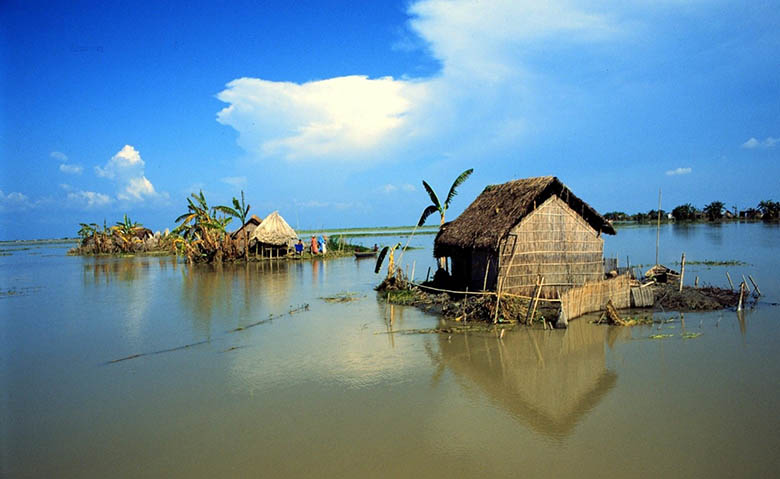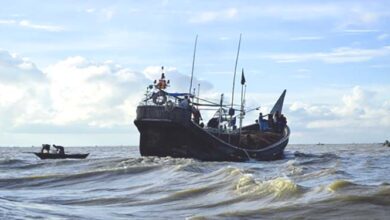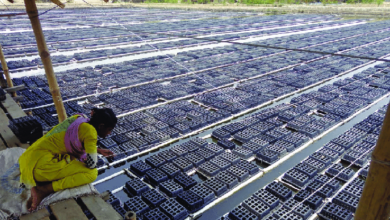
Bangladesh appears particularly susceptible to the growing effects of climate change. These severe threats are primarily caused by floods and cyclones, which have frequently destroyed citizens’ houses. For example, when Cyclone Mocha wreaked havoc on sections of Bangladesh, almost 12,000 houses suffered damage, with 2,000 completely demolished.
The coastal area of Bangladesh is particularly inhibited by fishing communities, as the natural climate change over time, these factors will play a significant role in the livelihood hardship and vulnerabilities of coastal fisherfolk communities.
To avert such catastrophe, Bangladeshi architects, builders, and non-governmental organizations are developing climate-resilient housing options that are both inexpensive and sustainable, as well as meeting the requirements of local populations.
Furthermore, as global warming amplifies the frequency and severity of natural catastrophes, more people living in poor housing are likely to be relocated or made homeless. As a result, architects and humanitarian specialists are advocating for more investment in climate-resilient housing.
According to Shuchita Sharmin, a professor of development studies at the University of Dhaka, Bangladesh has a problem since diverse geographic regions are susceptible to various climate hazards. As a result, there is no one-size-fits-all strategy for housing adaptation.
For example, floods and erosion of rivers are a threat to homes in the north and center of the nation, while tropical storms and increased salinity in the water are a threat to houses in the south.
Therefore, it would be useless to raise individual houses atop wooden or metal foundations in a flood zone because floodwaters would generate whirlpools around the bases and tear them apart, according to Kashef Chowdhury, an expert in this matter.
Chowdhury said he had held discussions with people to identify solutions that would benefit the entire community and had built elevated regions surrounding a man-made body of water, which protects elevated houses from floods while allowing safe access to rainfall.
In addition, native construction methods have long allowed inhabitants of some Bangladeshi regions, such as the Munshiganj area in the country’s center, to adjust to shifting weather patterns and water levels.
For instance, native wooden houses constructed in Munshiganj can endure up to 80 years because they are constructed on high platforms that maintain them above floods. When riverbank erosion becomes a problem, the houses can be disassembled and built elsewhere safer inland.
Khandaker Shabbir Ahmed, a professor of architecture at the Bangladesh University of Engineering and Technology (BUET), stated that local populations have significant indigenous expertise to deal with calamities and to come up with lasting solutions.
However, a number of scholars and architects agree that Bangladesh has to do more to include community input and local expertise in its disaster-proof housing policy.
In addition to Climate-Resilient housing, it is also crucial to focus on the livelihood and overall community structure of the fishers. The natural disasters such as cyclones, storm surges, floods, and erosion not only affect the infrastructure but also the livelihood too.
Cyclones have an influence on livelihoods by destroying fishing activities and assets, endangering fisherfolk life at sea, and causing damage to land-based resources, activities, and commodities.
Land erosion has also displaced families and devastated land employed in fish drying, agriculture, salt manufacture, and community facilities.
Extreme temperatures and unpredictable rains have been observed to have a significant influence on the drying process of fish. Raw or semi-dried fish attracts blowflies and becomes ruined by their larvae during rain, high temperatures, and humidity.
Since fishing communities frequently reside on low-lying coastlines and barrier islands that are exposed to several climatic stressors and shocks, they are also susceptible to relocation and migration brought on by climate change. Many fishing families have been uprooted from their ancestral houses as a result of the ongoing erosion. And many of the households moved as a result of these environmental shocks and strains.
Even though the government, donor organizations, and NGOs constructed roads and a school to increase these impoverished fishers’ access to markets, education, and other public services, more needs to be done to protect their rights.
Climate change of Bangladesh could significantly enhance the vulnerability of fishery-based livelihoods in the upcoming decades. Without adaptation, coordination, and support, there will be more deaths at sea and in the coastal zone, as well as further damage to the fishing community and their respective household possessions.
Therefore, it is critical to incorporate local and scientific expertise into government policy. And it is hoped that climate-resilient homes will surely benefit the communities.
Jaber Bin Abdul Bari
Department of Oceanography, NSTU




